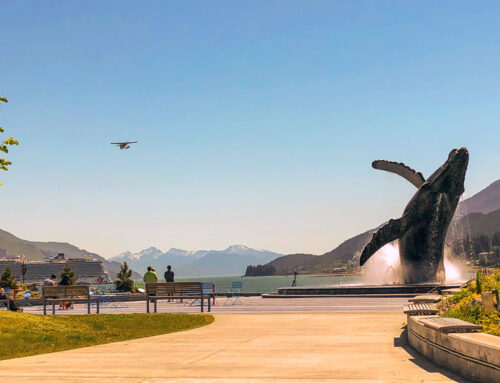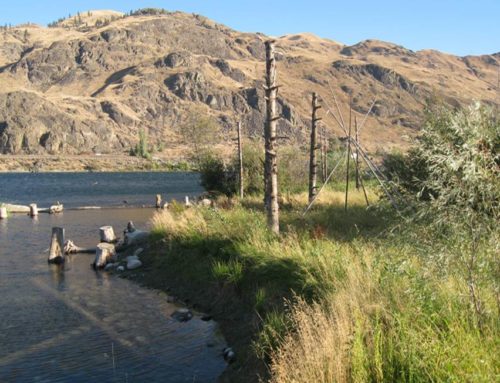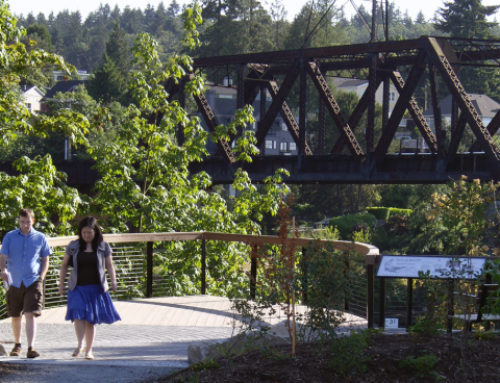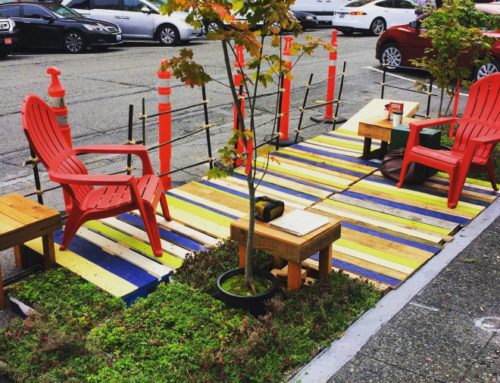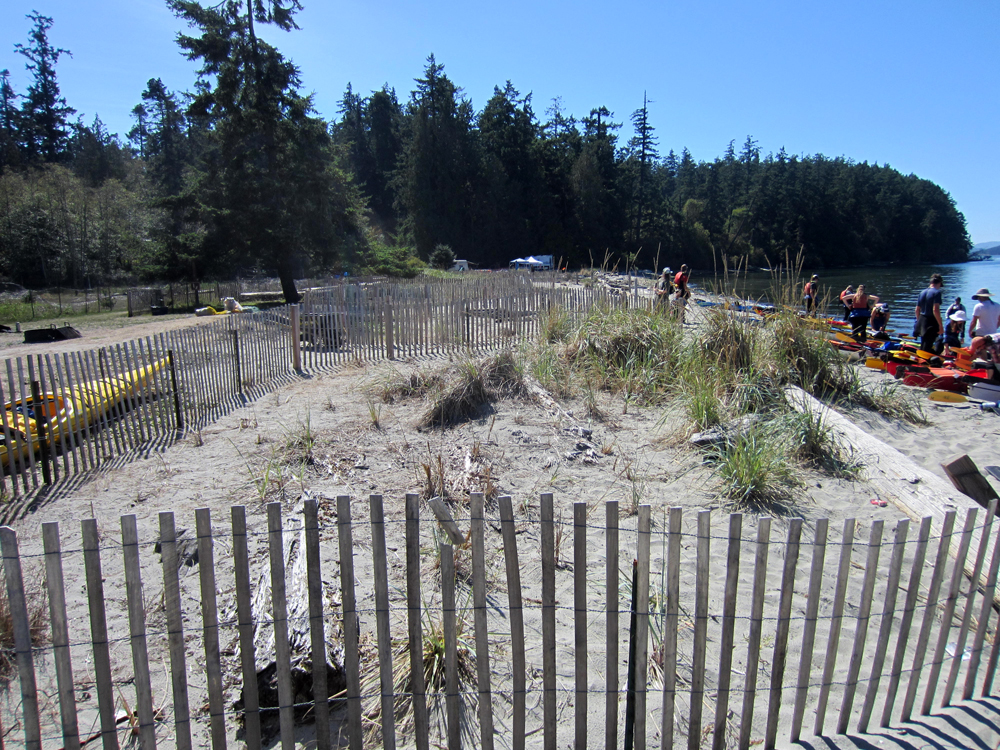
by Mike Perfetti, Senior Associate, Landscape Architect
One challenge we face on many public park projects is protecting newly installed plants from being trampled by park users. (Another challenge is preventing plants from being devoured by wildlife!) Recently we worked with Davido Consulting Group at San Juan County’s Odlin Park to design renovations to an extremely popular waterfront campground.
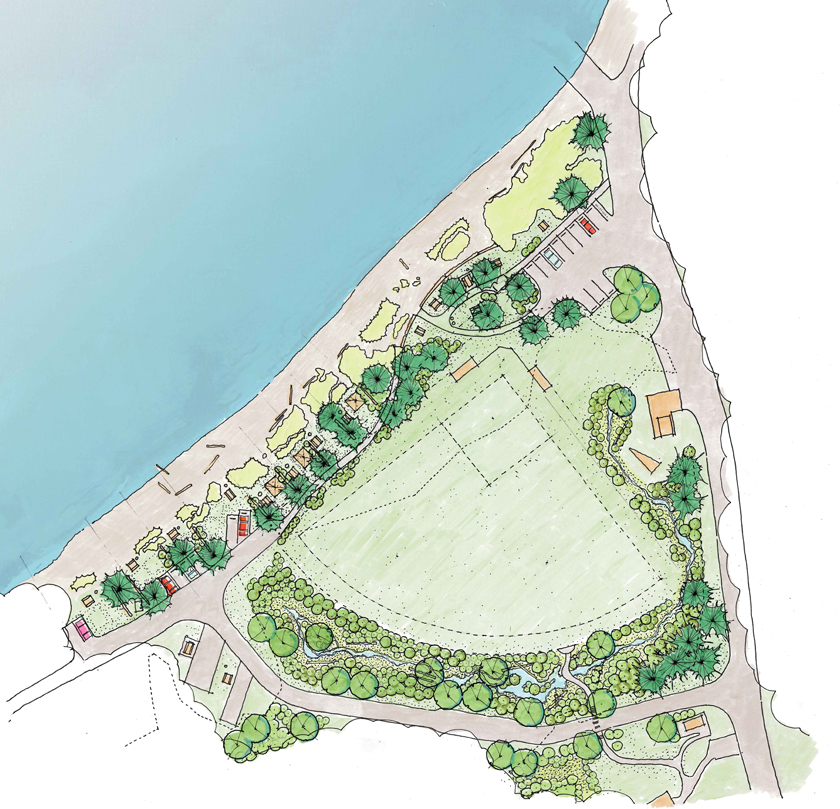 Previously, the beach sites were strung together, tents, and portable shelters packed in against one another. Cars parked in all sorts of configurations within the sites. Though patches of dune grass prevailed around user trails, the grass was unable to expand, limited by the expansive human footprint.
Previously, the beach sites were strung together, tents, and portable shelters packed in against one another. Cars parked in all sorts of configurations within the sites. Though patches of dune grass prevailed around user trails, the grass was unable to expand, limited by the expansive human footprint.
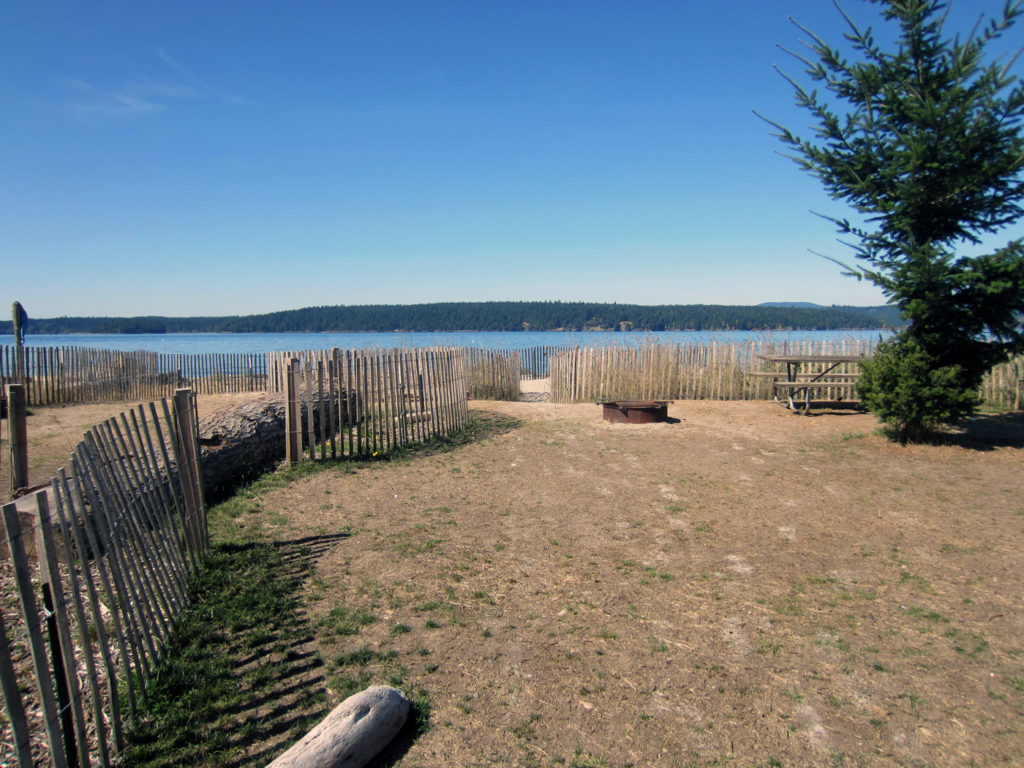
With the renovations, we used native shoreline plants to create more privacy between the beach sites. The restored vegetation on the shoreline also enhances habitat and reduces erosion. The beach sites don’t have irrigation and budget was an issue during design, so it was important to take a restoration approach, using smaller plant material.
It will take some time for the smaller plants to become established and substantial enough to achieve their desired effect. In anticipation of this time lag, we designed a pattern of dune fencing to protect the plants and delineate use zones. After one jam-packed camping season and record-breaking heat, the shoreline planting areas are doing well.
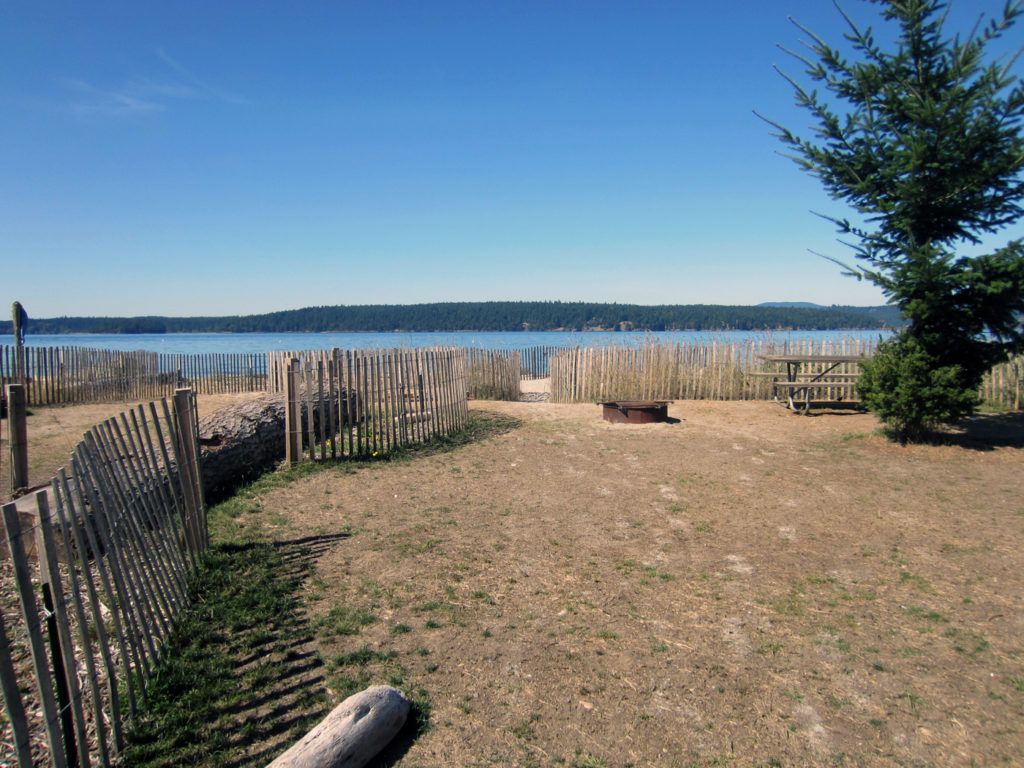
Shore pines, Nootka Rose and Dune grass will eventually form thickets of semi-shady beach plantings, their scent mixing with the salt air and helping to break the wind as campers stoke the beach fires.
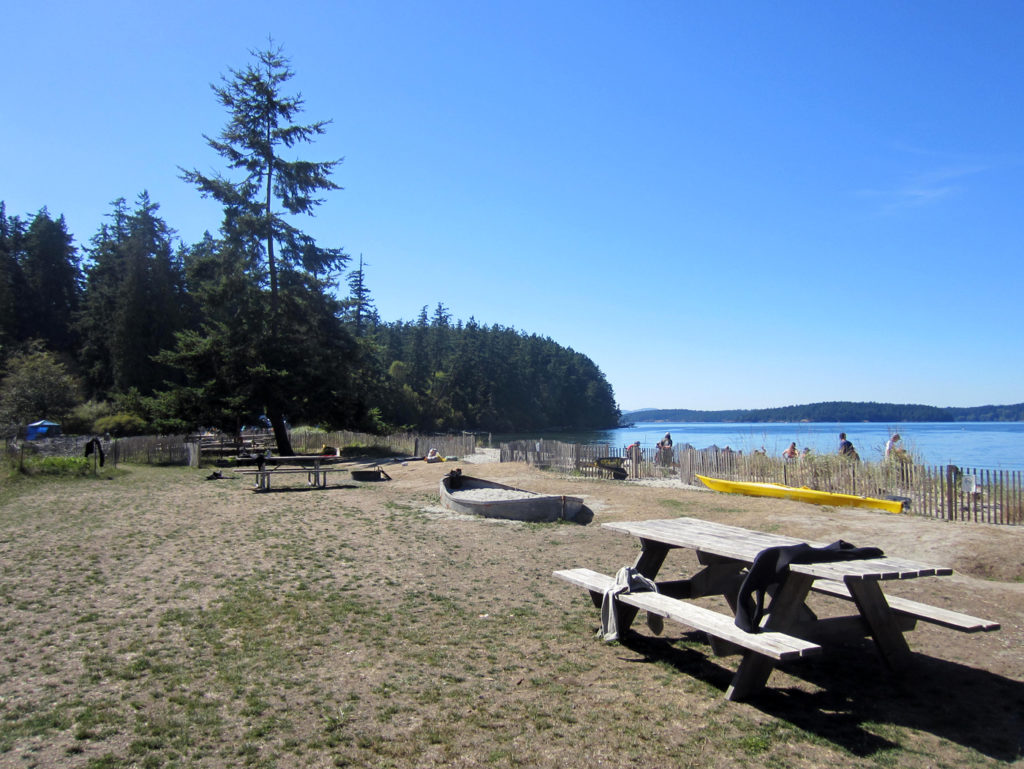
In the meantime, the dune fencing will provide some of that function, creating an aura that is distinctly beachy, a welcome improvement from the cluster of vehicles and the unabated camp stuff that used to sprawl across the shoreline at Odlin Park.

